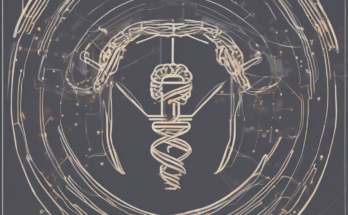Healthcare Data Security: Protecting Sensitive Information in a Connected World
The healthcare industry sits at the intersection of sensitive personal information and advanced technology. This creates a unique and significant challenge: ensuring the security of healthcare data. The volume, variety, and velocity of data generated within the healthcare ecosystem – from patient records and genomic information to billing details and research findings – are constantly expanding, making the task of safeguarding this information increasingly complex and crucial.
The Landscape of Healthcare Data Security Threats
Healthcare data security threats are multifaceted and ever-evolving. They range from sophisticated cyberattacks to more mundane human errors. Understanding these threats is the first step towards effective protection.
- Cyberattacks: These include ransomware attacks that encrypt data and demand a ransom for its release, phishing scams designed to steal credentials, malware infections that compromise systems, and denial-of-service attacks that disrupt access to critical resources.
- Insider Threats: Malicious or negligent employees with access to sensitive data can pose a significant risk. This includes accidental data leaks, intentional data theft, and sabotage.
- Data Breaches: These occur when unauthorized individuals gain access to protected health information (PHI). Data breaches can have devastating consequences for patients, healthcare providers, and the reputation of the organization.
- Physical Security Threats: The physical security of healthcare facilities and the equipment they house is crucial. Theft, unauthorized access, and physical damage to servers or devices can compromise data security.
- Third-Party Risks: Healthcare organizations often rely on third-party vendors for services like data storage, software development, and IT support. These vendors represent a potential security risk if they don’t have adequate security measures in place.
- Compliance Failures: Failure to comply with relevant regulations, such as HIPAA in the United States, can lead to significant financial penalties and reputational damage.
Key Components of a Robust Healthcare Data Security Strategy
A comprehensive healthcare data security strategy requires a multi-layered approach that addresses various aspects of security. These key components are essential for mitigating risks and ensuring the protection of sensitive patient information.
1. Risk Assessment and Management
Regular risk assessments are vital to identify vulnerabilities and potential threats. This involves analyzing the organization’s IT infrastructure, data storage practices, and employee access controls to pinpoint weaknesses and prioritize mitigation efforts.
2. Access Control and Authentication
Strict access control mechanisms are necessary to ensure that only authorized personnel can access sensitive data. This includes implementing robust authentication processes, such as multi-factor authentication, to verify user identities and prevent unauthorized access.
3. Data Encryption
Encrypting data both in transit and at rest is critical to protect it from unauthorized access. Encryption transforms data into an unreadable format, making it inaccessible to those without the decryption key.
4. Data Loss Prevention (DLP)
DLP measures aim to prevent sensitive data from leaving the organization’s control. This can involve monitoring data movement, implementing data loss prevention tools, and establishing strict policies regarding data handling and storage.
5. Network Security
Protecting the healthcare organization’s network from unauthorized access is paramount. This requires implementing firewalls, intrusion detection systems, and other security measures to prevent cyberattacks and data breaches.
6. Security Awareness Training
Educating employees about security threats and best practices is crucial. Regular security awareness training helps employees identify and avoid phishing scams, malware, and other threats, reducing the risk of human error.
7. Incident Response Plan
Having a well-defined incident response plan is essential to effectively handle security incidents. This plan outlines procedures for identifying, containing, and resolving security breaches, minimizing the impact on the organization and its patients.
8. Regular Security Audits and Penetration Testing
Regular security audits and penetration testing are crucial for identifying vulnerabilities and weaknesses in the organization’s security infrastructure. These assessments help ensure that security measures are effective and up-to-date.
Compliance and Regulations
Healthcare organizations must comply with various regulations and standards related to data security. Non-compliance can lead to significant penalties and reputational damage. Key regulations include:
- HIPAA (Health Insurance Portability and Accountability Act) in the United States: This act sets national standards for protecting the privacy and security of protected health information (PHI).
- GDPR (General Data Protection Regulation) in Europe: This regulation provides a framework for protecting personal data within the European Union.
- NIST Cybersecurity Framework: This framework provides a voluntary set of guidelines for managing and reducing cyber risks.
- ISO 27001: This international standard specifies requirements for establishing, implementing, maintaining, and continually improving an information security management system (ISMS).
Emerging Technologies and their Role in Healthcare Data Security
Emerging technologies offer both opportunities and challenges for healthcare data security. While some technologies can enhance security, others may introduce new vulnerabilities.
- Blockchain: Blockchain technology can enhance data security by providing a secure and transparent way to record and manage healthcare data.
- Artificial Intelligence (AI): AI can be used to detect and prevent cyberattacks, analyze security logs, and improve the efficiency of security operations.
- Cloud Computing: Cloud computing offers scalability and cost-effectiveness, but also introduces security risks if not properly managed.
- Internet of Medical Things (IoMT): The increasing use of connected medical devices raises concerns about data security and privacy.
- Quantum Computing: While still in its early stages, quantum computing poses a potential threat to current encryption methods, requiring proactive measures to address this emerging risk.
The Future of Healthcare Data Security
The landscape of healthcare data security is constantly evolving, driven by technological advancements, new threats, and evolving regulatory requirements. To stay ahead of these challenges, healthcare organizations must adopt a proactive and adaptive approach to data security. This includes investing in advanced security technologies, fostering a culture of security awareness, and continually adapting strategies to address emerging threats and vulnerabilities. Collaboration across the healthcare ecosystem is also crucial for sharing best practices and collectively mitigating risks.
Ultimately, securing healthcare data is not just a technological challenge; it is an ethical imperative. Protecting patient information is paramount to building trust, maintaining patient confidentiality, and ensuring the integrity of the healthcare system.


